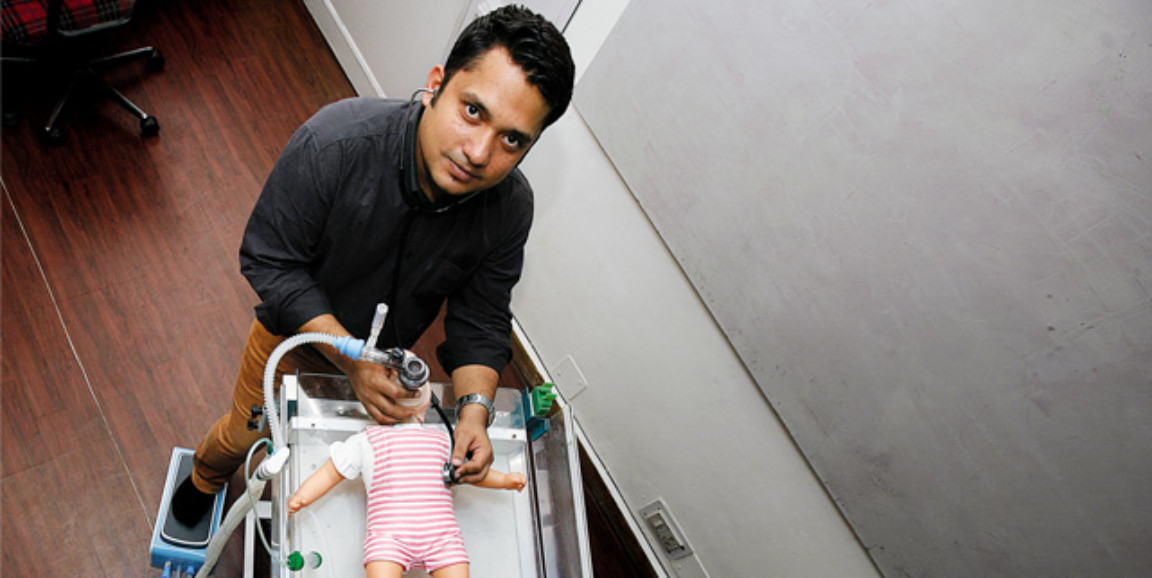One day when I was training as a resident in India about a decade ago, I visited my mother, who is also a doctor, at her clinic. As I waited in her consulting room, a twelve-year-old boy suddenly collapsed. My mother saw that he wasn’t breathing and sprang into action, delivering artificial breaths with a bag-mask device and giving vigorous cardiac compression. She pushed and pumped until her hands became sore and her arms cramped, but didn’t stop until she saw the color rush back into the boy’s face. The episode seemed to last for hours but was really just 20 intense minutes.
Later in my training, I gained personal experience performing resuscitations. Yet, despite ample practice, each event was marked by chaos, confusion, and anxiety. The problem was that the dominant hand of the person doing the resuscitation was occupied by the task of compressing the ventilation bag. This left only one hand to perform the triple maneuver of jaw-thrust, chin lift, and neck tilt, in addition to using the fingers of that same hand to create the all-important face mask seal. When I thought about what it must be like to be a in a remote location struggling single-handedly to save a life, I knew there had to be a better way. I remember thinking that if caregivers could compress the bag by foot, then they would have another free hand to work more effectively.
When I became a Stanford-India Biodesign Fellow, my team and I decided to focus specifically on a way to make it easier for frontline health care workers to resuscitate newborns. We wanted to address all the challenges of resuscitation in order to save the 800,000 newborns who fail to breathe every year. The prevalent thinking was that better resuscitation was a function of better training in this skill-intensive procedure, but we came at it from a different perspective. We wanted to build a solution that made resuscitation easier, so more people could do it single-handedly.
After lots of hard work, we introduced the first foot-operated resuscitator for newborns. The device makes it possible for a single person to perform full CPR by freeing both of the operator’s hands to hold and secure the mask. This reduces air leakage by half. It also has built-in suction to remove any mucus blocking the airway. And it monitors air pressure and can control oxygen levels without requiring a battery or electric power, which makes it functional in urban and rural settings alike.
To date, medical devices and technologies initiated by Stanford Byers Center for Biodesign trainees while in the program’s courses and fellowships have been used to care for more than 1.5 million patients. In this new weekly series, some of our innovators will discuss their work and the patients that inspired them
Avijit Bansal, MD, was a 2011-12 Stanford-India Biodesign Fellow.
Photo by Vishal Koul for Outlook Business Magazine, India




